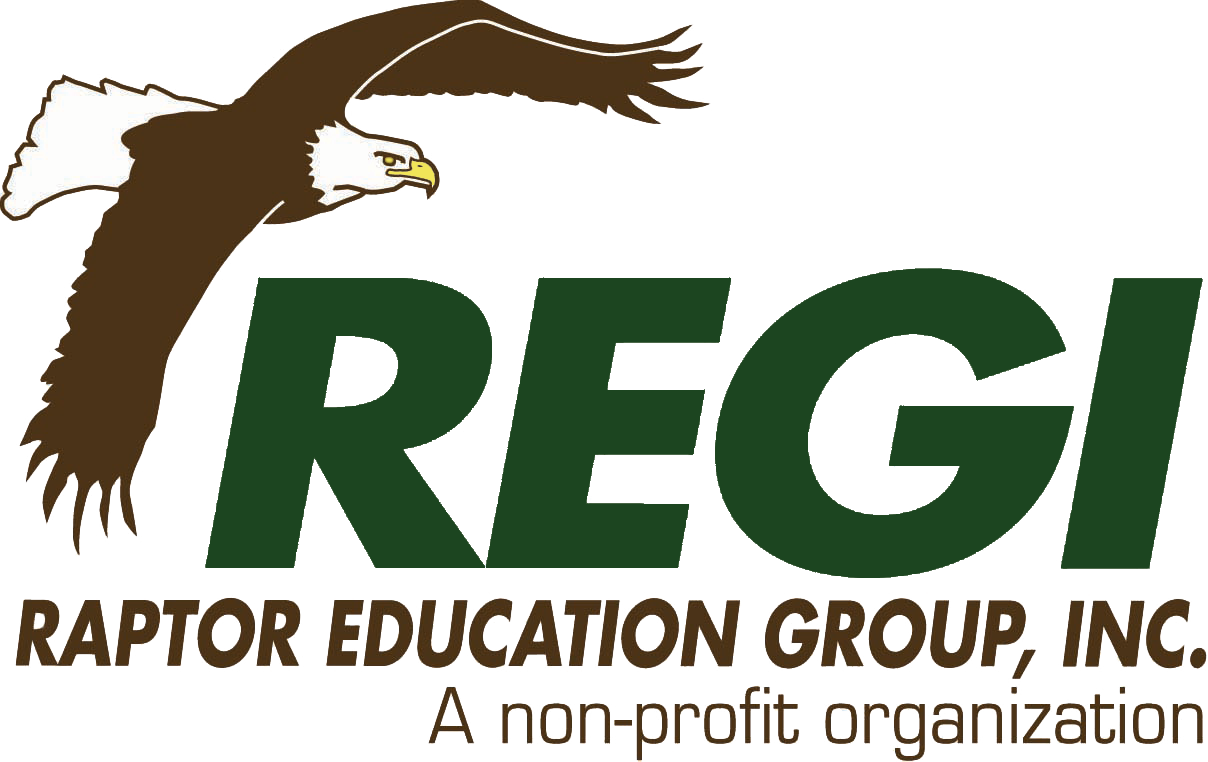How To Handle An Injured Raptor
The following information is provided to help you safely recover and transport an injured raptor (eagle, hawk, owl, etc.) to a licensed rehabilitation center, such as REGI*, for immediate specialized care. If you are looking for information on helping a baby bird, song bird, etc., please view "How to Help a Baby Bird" for more appropriate instructions.
Please Note: Under Federal and State Law it is LEGAL for any person to rescue or transport a bird of prey immediately to a licensed rehabilitator. It is ILLEGAL under Federal or State law to injure, possess, or keep in your care a bird of prey or any protected native bird species.
How To Safely Recover And Transport An Injured Raptor
Please follow these outlined instructions carefully to prevent further injury to either the raptor OR yourself. Before you begin, please appreciate that a raptor's talons (claws) are it's main method of protection and defense. They are very sharp and very powerful. You must ALWAYS be aware of where they are in relation to parts of your own body.
Your goal is to completely cover the injured bird, recover it to an appropriate box to prevent further injury, and IMMEDIATELY transport it to or seek the help of a licensed wildlife rehabilitator* who can provide the necessary specialized care. DO NOT seek the help of a veterinarian. Most have neither the facilities, time, or practical experience to properly handle injured raptors.
These are suggestions if you want to attempt to capture the bird yourself. Please do not hesitate to call with any questions so a staff member can walk you through the process or send a volunteer to help if available.
Capturing, Containing And Transporting The Injured Raptor
Obtain a TOWEL, BLANKET, JACKET or any other handy lightweight item that is large enough to cover the entire bird.
If you do not have a cardboard box, stop at a nearby house or business and obtain a cardboard box. The box should be WELL VENTILATED and just large enough to allow the bird some movement, but not so large as to allow the bird to move around and cause further injury. Place a towel or a blanket at the bottom of the box to prevent the bird from sliding. Do not put any wild bird in a wire cage.
Before attempting to cover/handle the bird: BE AWARE OF WHERE THE FEET ARE!!!
Birds are sensitive to the world around them. Approach the bird from the rear if possible. As you approach, remain calm and use a low voice. If the bird is alert and can follow your movements, anticipate that it will struggle when first covered. Do not have a dog with you (a dog is a predator and will cause the bird to react).
Carefully place the cover over the bird. Be certain the legs and talons are contained and covered completely.
Move quickly to restrain the bird under the covering by:
As the bird calms down, gather the covering together, being careful to get the bird's wings in a natural position against the body.
Slide your hands down the body pinning the wings in as you go. With one hand, grab both legs as high to the body as possible. Once the bird’s legs are in hand, transfer the bird into a cardboard box.
If the bird is placed in a dog crate or other container and a Volunteer Transporter is used to transfer the bird to REGI, it must be transferred in that and you will be responsible for picking up the container.
Note the geographic location where the bird was found. This information will be necessary when the bird is ready for release back into the wild.
CALL US AT RAPTOR EDUCATION GROUP, INC. AT 715-623-4015. We appreciate you transporting the bird to us. If doing so: NEVER TRANSPORT A BIRD IN YOUR TRUNK OR IN THE BACK OF AN OPEN PICKUP TRUCK. in the event you cannot provide transport, arrangements will be made by us to have a Volunteer Transporter pick up the bird and transport it to our rehabilitation facility.
Step 1: Use a lightweight blanket or jacket to completely cover the raptor.
Step 2: Be sure the raptor's talons are covered and secured BEFORE you attempt to pick up the injured bird.
Step 3: Transfer the injured raptor to a box with air holes before IMMEDIATELY transporting to a licensed rehabilitation center.
RAPTOR EDUCATION GROUP, INC. THANKS YOU FOR YOUR INTEREST ON BEHALF OF BIRDS OF PREY.
* Raptor Education Group, Inc. is licensed by the U.S. Fish and Wildlife Service, and the State of Wisconsin Department of Natural Resources to rehabilitate injured raptors.



